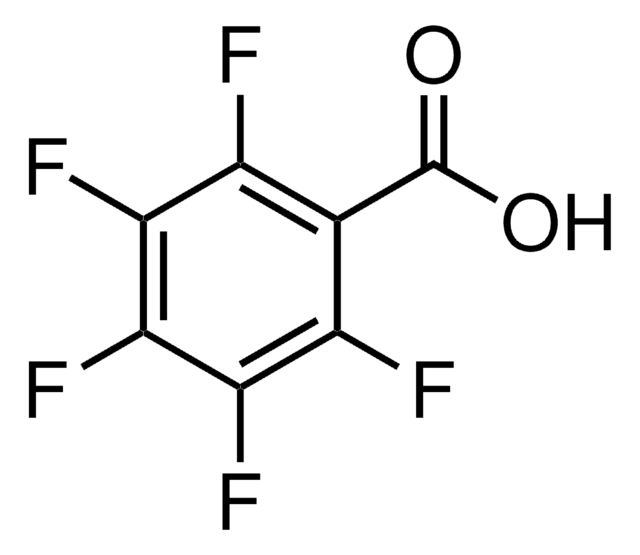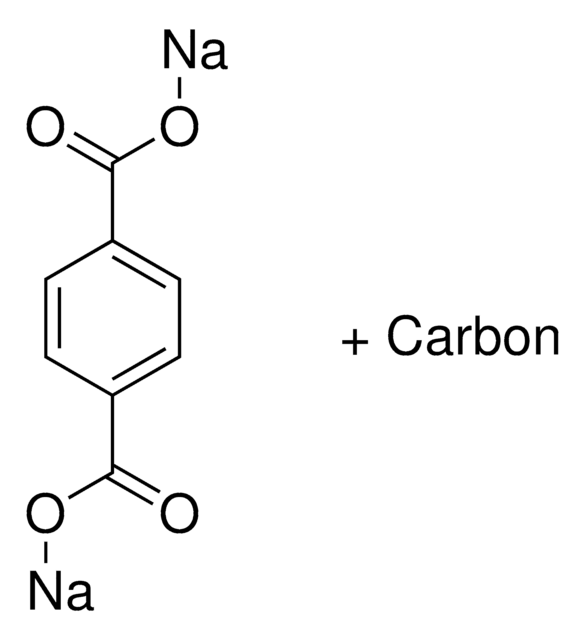Wichtige Dokumente
38419
α-Cyan-2,3,4,5,6-pentafluor-zimtsäure
matrix substance for MALDI-MS, ≥95.0% (HPLC)
Synonym(e):
2-Cyan-3-(2,3,4,5,6-pentafluorphenyl)-2-propensäure, PentaFCCA
About This Item
Empfohlene Produkte
Qualität
matrix substance for MALDI-MS
Qualitätsniveau
Assay
≥95.0% (HPLC)
Funktionsklasse(n) des Analyten
drugs of abuse, ionic liquids (quantification)
chemische Klasse(n) des Analyten
chlorinated lipids, lipids, peptides, phospholipids, phosphopeptides
Methode(n)
collision-induced dissociation MS/MS (CID-MS/MS): suitable
matrix-enhanced secondary ion MS (ME-SIMS): suitable
Löslichkeit
methanol: 100 mg/10 mL, clear, colorless to light yellow
SMILES String
OC(/C(C#N)=C/C1=C(F)C(F)=C(F)C(F)=C1F)=O
InChI
1S/C10H2F5NO2/c11-5-4(1-3(2-16)10(17)18)6(12)8(14)9(15)7(5)13/h1H,(H,17,18)/b3-1+
InChIKey
LYNQRDIQUFMLTI-HNQUOIGGSA-N
Suchen Sie nach ähnlichen Produkten? Aufrufen Leitfaden zum Produktvergleich
Ähnliches Produkt
Signalwort
Warning
Gefahreneinstufungen
Acute Tox. 4 Dermal - Acute Tox. 4 Inhalation - Acute Tox. 4 Oral - Eye Irrit. 2 - Skin Irrit. 2 - STOT SE 3
Zielorgane
Respiratory system
Lagerklassenschlüssel
11 - Combustible Solids
WGK
WGK 3
Flammpunkt (°F)
Not applicable
Flammpunkt (°C)
Not applicable
Hier finden Sie alle aktuellen Versionen:
Analysenzertifikate (COA)
Die passende Version wird nicht angezeigt?
Wenn Sie eine bestimmte Version benötigen, können Sie anhand der Lot- oder Chargennummer nach einem spezifischen Zertifikat suchen.
Besitzen Sie dieses Produkt bereits?
In der Dokumentenbibliothek finden Sie die Dokumentation zu den Produkten, die Sie kürzlich erworben haben.
Unser Team von Wissenschaftlern verfügt über Erfahrung in allen Forschungsbereichen einschließlich Life Science, Materialwissenschaften, chemischer Synthese, Chromatographie, Analytik und vielen mehr..
Setzen Sie sich mit dem technischen Dienst in Verbindung.

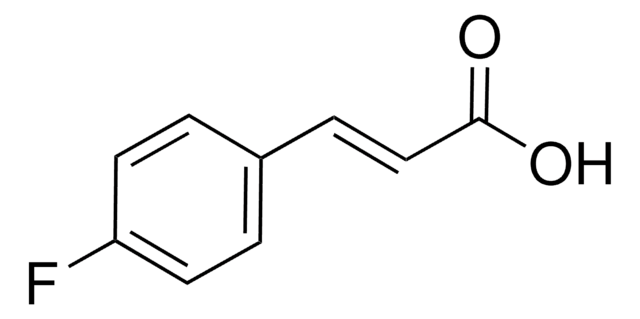
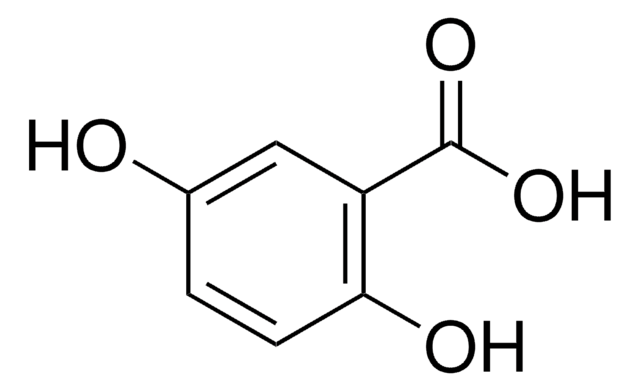
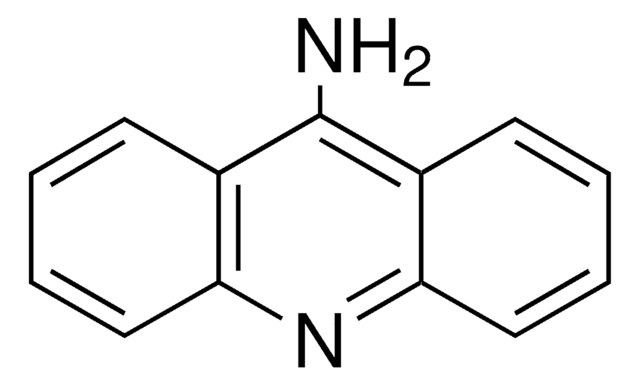
![trans-2-[3-(4-tert-Butylphenyl)-2-methyl-2-propenyliden]malononitril matrix substance for MALDI-MS, ≥99.0% (HPLC)](/deepweb/assets/sigmaaldrich/product/structures/249/587/f8021369-f65a-413d-887d-3c8a4d2a248f/640/f8021369-f65a-413d-887d-3c8a4d2a248f.png)
